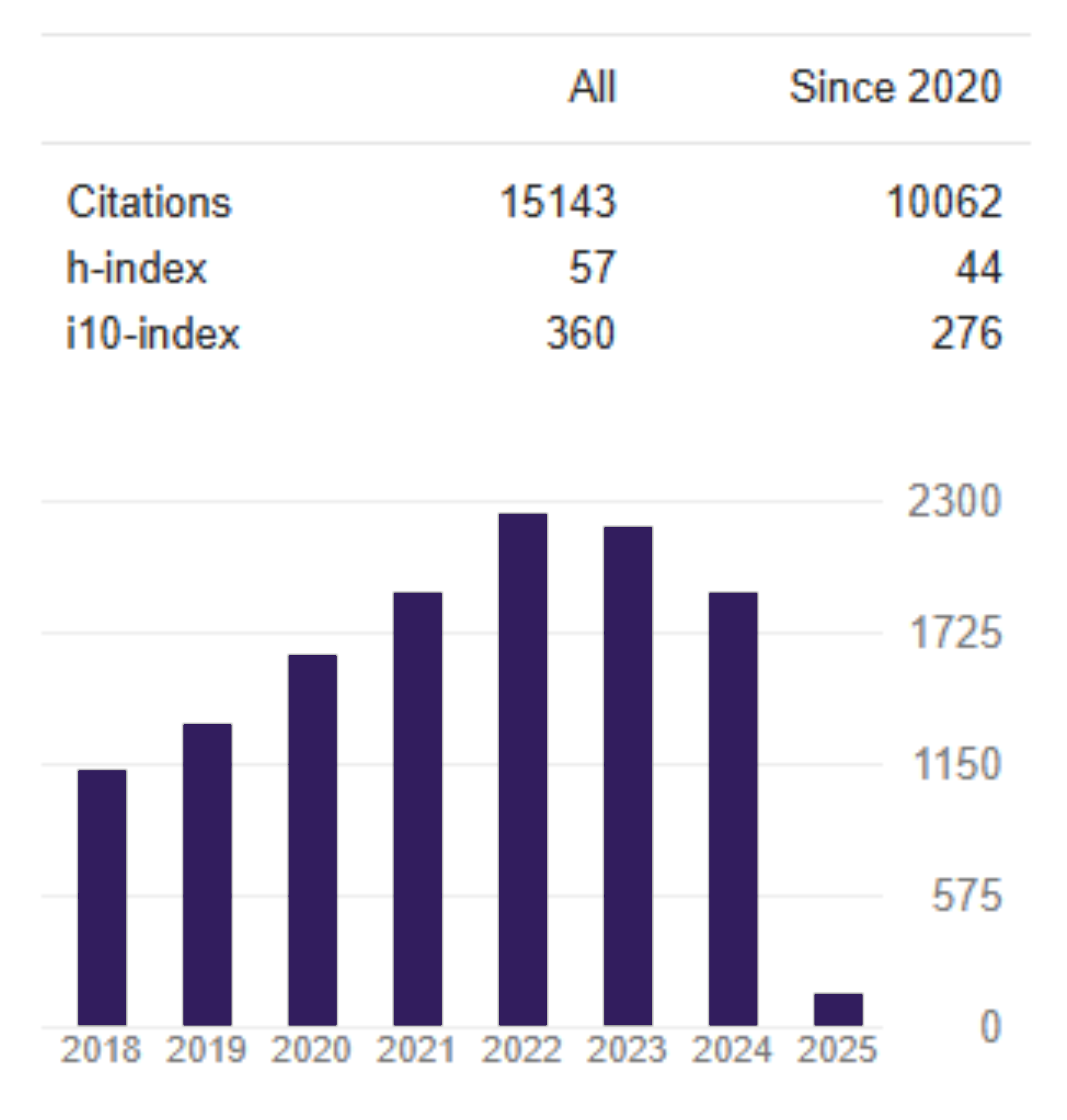Idiosyncratic tail risk and stock return in Indonesia
DOI:
https://doi.org/10.26905/jkdp.v24i2.4083Keywords:
Asset pricing, Generalized Extreme Value Distribution, Idiosyncratic tail riskAbstract
Idiosyncratic tail risk explains the financial crisis which happened due to idiosyncratic risk. It could also be used as a factor for asset pricing, making it necessary to be further studied since it could help protect investors from extreme incidents that could bring loss. We investigate the effect of idiosyncratic tail risk to the stock return in Indonesia. The data of daily stock price of 662 public companies in Indonesia that was registered in Indonesia stock exchange (IDX) are used during the period of 2006-2018. We include the firms that have at least 10 trading days in a month for providing enough observation to determine tail index to get idiosyncratic tail risk. First of all we using portfolio approach to find the effect of tail risks to the stock return is used. The results show that idiosyncratic tail risk has negative effects on the stock return in portfolio level. However, idiosyncratic tail risk does not have effects on stock return in individual firm level.
JEL Classification: G12, G23
Â
How to Cite:
Murningsih, S., Firdaus, M., & Purwanto, B. (2020). Factors influencing Indonesian rural banks’ credit disbursement. Jurnal Keuangan dan Perbankan, 24(2), 241-251.
Downloads
References
Atilgan, Y., Bali, T. G., Demirtas, K. O., & Gunaydin, A. D. (2020). Left-tail momentum: Underreaction to bad news, costly arbitrage, and equity returns. Journal of Financial Economics, 135(3), 725-753. https://doi.org/10.1016/j.jfineco.2019.07.006
Ando, M., & Hodoshima, J. (2006). The robustness of asset pricing models: Co-skewness and co-kurtosis. Finance Research Letters, 3(2), 133-146. https://doi.org/10.1016/j.frl.2006.03.002
Ang, A., Hodrick, R. J., Xing, Y., & Zhang, X. (2006). The crossâ€section of volatility and expected returns. The Journal of Finance, 61(1), 259-299. https://doi.org/10.1111/j.1540-6261.2006.00836.x
Ang, A., Hodrick, R. J., Xing, Y., & Zhang, X. (2009). High idiosyncratic volatility and low returns: International and further US evidence. Journal of Financial Economics, 91(1), 1-23. https://doi.org/10.1016/j.jfineco.2007.12.005
Bali, T. G., Cakici, N., & Whitelaw, R. F. (2011). Maxing out: Stocks as lotteries and the cross-section of expected returns. Journal of Financial Economics, 99(2), 427-446. https://doi.org/10.1016/j.jfineco.2010.08.014
Bali, T. G., Cakici, N., & Whitelaw, R. F. (2014). Hybrid tail risk and expected stock returns: When does the tail wag the dog?. The Review of Asset Pricing Studies, 4(2), 206-246. https://doi.org/10.1093/rapstu/rau006
Baltussen, G., Van Bekkum, S., & Van Der Grient, B. (2018). Unknown unknowns: Uncertainty about risk and stock returns. Journal of Financial and Quantitative Analysis, 53(4), 1615-1651. https://doi.org/10.1017/S0022109018000480
Barinov, A. (2011). Idiosyncratic volatility, growth options, and the cross-section of returns. Unpublished Working Paper. University of Georgia. http://dx.doi.org/10.2139/ssrn.1028869
Benartzi, S., & Thaler, R. H. (1995). Myopic loss aversion and the equity premium puzzle. The Quarterly Journal of Economics, 110(1), 73-92. https://doi.org/10.2307/2118511
Chabi-Yo, F., Ruenzi, S., & Weigert, F. (2018). Crash sensitivity and the cross-section of expected stock returns. Journal of Financial and Quantitative Analysis, 53(03), 1059–1100. https://doi.org/10.1017/s0022109018000121
Fama, E. F., & French, K. R. (1993). Common risk factors in the returns on stocks and bonds. Journal of Financial Economics, 33, 3-56 https://doi.org/10.1016/0304-405X(93)90023-5
Fama, E. F., & MacBeth, J. D. (1973). Risk, return, and equilibrium: Empirical tests. Journal of Political Economy, 81(3), 607-636. https://doi.org/10.1086/260061
Fu, F. (2009). Idiosyncratic risk and the cross-section of expected stock returns. Journal of Financial Economics, 91(1), 24-37. https://doi.org/10.1016/j.jfineco.2008.02.003
Gao, G. P., Lu, X., & Song, Z. (2019). Tail risk concerns everywhere. Management Science, 65(7), 3111-3130. https://doi.org/10.1287/mnsc.2017.2949
Harris, R. D. F., Nguyen, L. H., & Stoja, E. (2019). Systematic extreme downside risk. Journal of International Financial Markets, Institutions & Money, 61, 128-142. https://doi.org/10.1016/j.intfin.2019.02.007
Harvey, C. R., & Siddique, A. (2000). Conditional skewness in asset pricing tests. Journal of Finance, 55(3), 1263-1295. https://doi.org/10.1111/0022-1082.00247
Hou, K., & Loh, R. K. (2016). Have we solved the idiosyncratic volatility puzzle? Journal of Financial Economics, 121(1), 167-194. https://doi.org/10.1016/j.jfineco.2016.02.013
Huang, W., Liu, Q., Rhee, S. G., & Wu, F. (2012). Extreme downside risk and expected stock returns. Journal of Banking & Finance, 36(5), 1492-1502. https://doi.org/10.1016/j.jbankfin.2011.12.014
Hwang, S., & Satchell, S. E. (1999). Modelling emerging market risk premia using higher moments. International Journal of Finance & Economics, 4(4), 271-296. https://doi.org/10.1002/(SICI)1099-1158(199910)4:4<271::AID-IJFE110>3.0.CO;2-M
Kelly, B., & Jiang, H. (2014). Tail risk and asset prices. The Review of Financial Studies, 27(10), 2841-2871. https://doi.org/10.1093/rfs/hhu039
Long, H., Jiang, Y., & Zhu, Y. (2018). Idiosyncratic tail risk and expected stock returns: Evidence from the Chinese stock markets. Finance Research Letters, 24, 129-136. https://doi.org/10.1016/j.frl.2017.07.009
Meng, Y., & Pantzalis, C. (2018). Monthly cyclicality in retail Investors’ liquidity and lottery-type stocks at the turn of the month. Journal of Banking & Finance, 88, 176–191. https://doi.org/10.1016/j.jbankfin.2017.11.012
Miralles-Marcelo, J. L., Miralles-Quirós, M. del M., & Miralles-Quirós, J. L. (2012). Asset pricing with idiosyncratic risk: The Spanish case. International Review of Economics and Finance, 10(1), 137-155. https://doi.org/10.1016/j.iref.2011.07.004
Nartea, G. V., Ward, B. D., & Yao, L. J. (2011). Idiosyncratic volatility and crossâ€sectional stock returns in Southeast Asian stock markets. Accounting & Finance, 51(4), 1031-1054. https://doi.org/10.1111/j.1467-629X.2010.00384.x
Pudjianto, M., Wibowo, B. (2019). Uji empiris pengaruh idiosyncratic volatility terhadap expected return: aplikasi Fama-French five factor model, Jurnal Ilmiah Manajemen 9, 268-281. http://doi.org/10.22441/mix.2019.v9i2.002
Tversky, A., & Kahneman, D. (1992). Advances in prospect theory: Cumulative representation of uncertainty. Journal of Risk and uncertainty, 5(4), 297-323. https://doi.org/10.1007/BF00122574
Van Oordt, M. R., & Zhou, C. (2016). Systematic tail risk. Journal of Financial and Quantitative Analysis, 51(2), 685-705. https://doi.org/10.1017/S0022109016000193
Xu, Y., & Malkiel, B. G. (2004) Idiosyncratic risk and security returns. AFA 2001 New Orleans Meetings. Available at SSRN: https://ssrn.com/abstract=255303
Downloads
Additional Files
Published
Issue
Section
License

This work is licensed under a Creative Commons Attribution-ShareAlike 4.0 International License.



